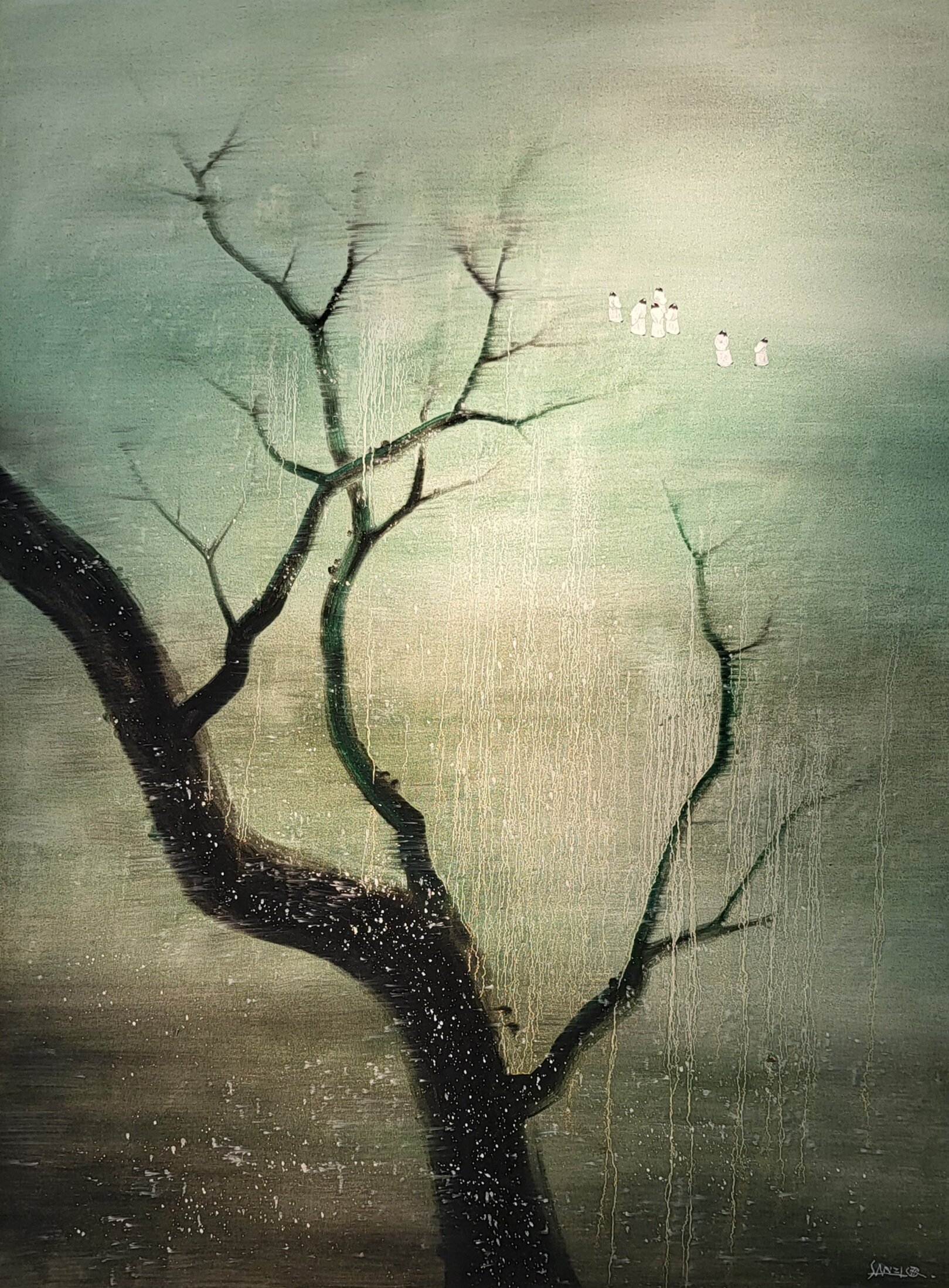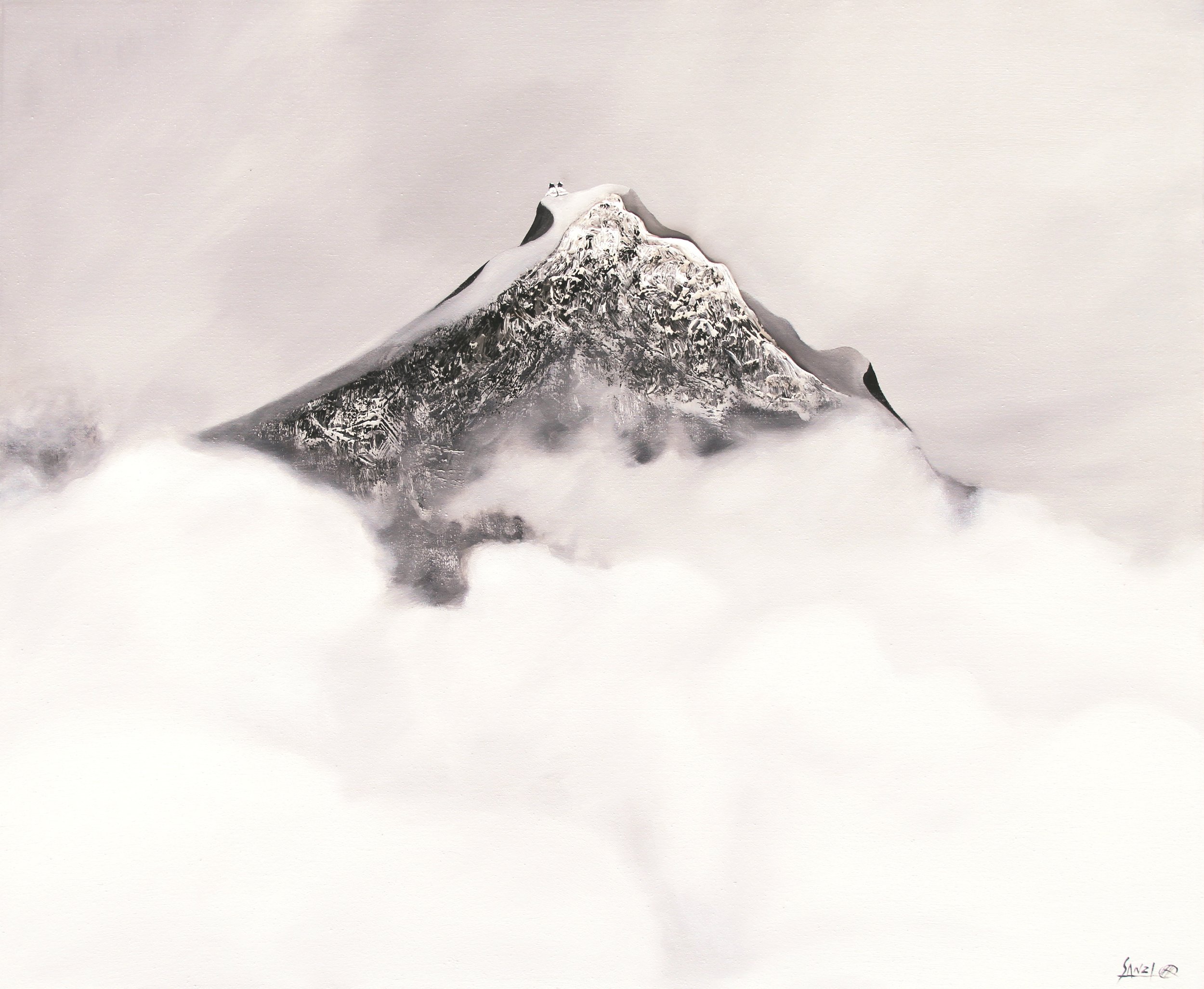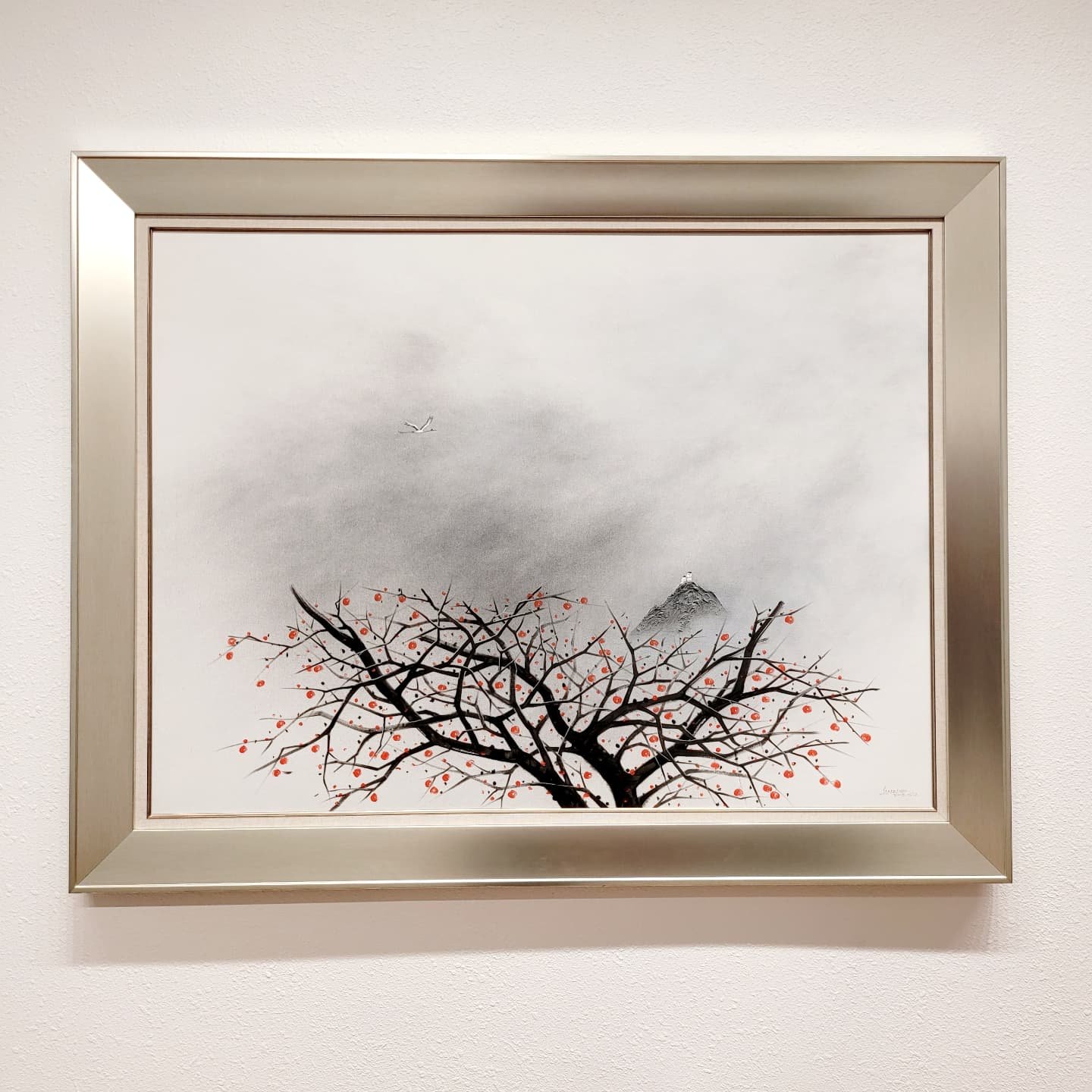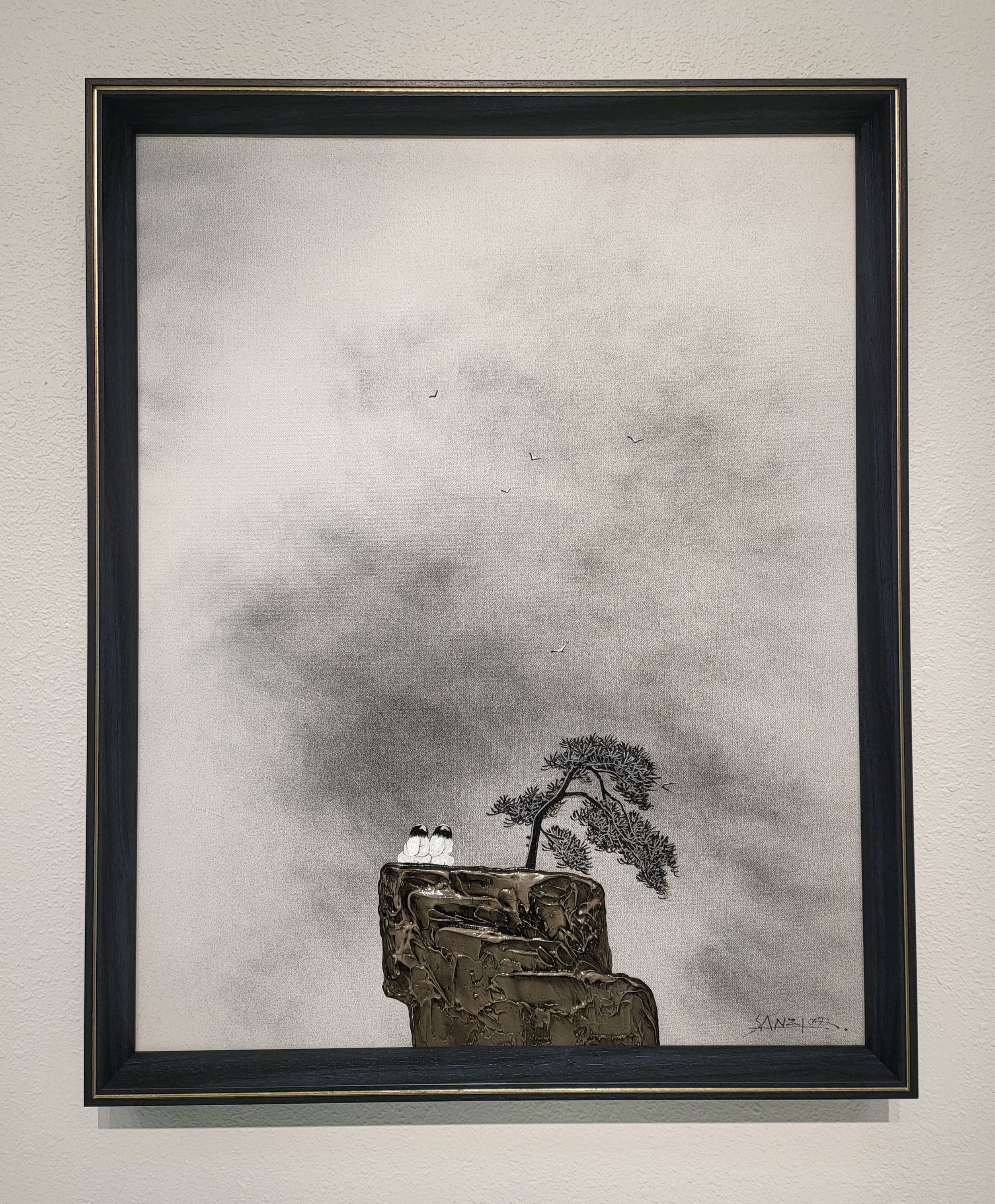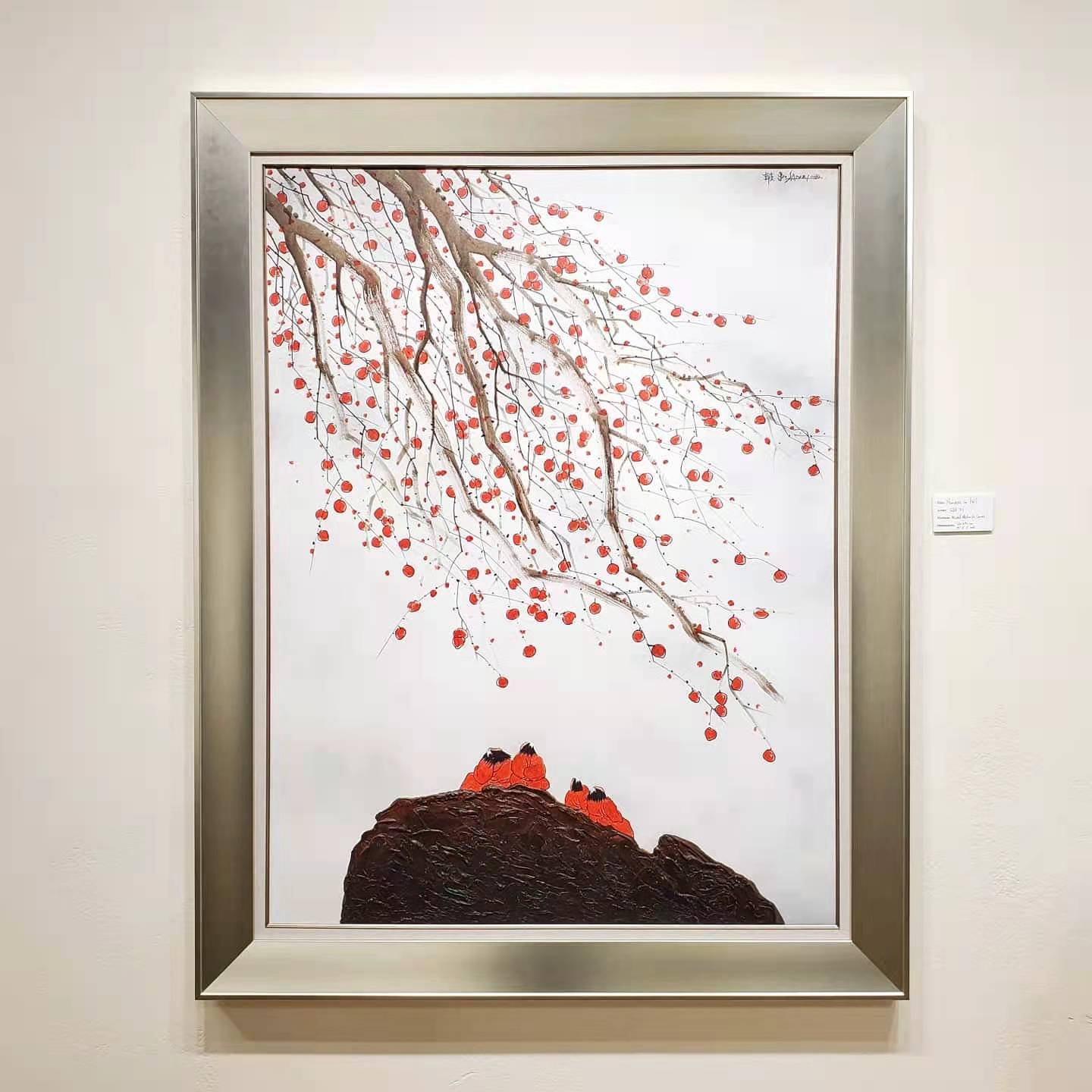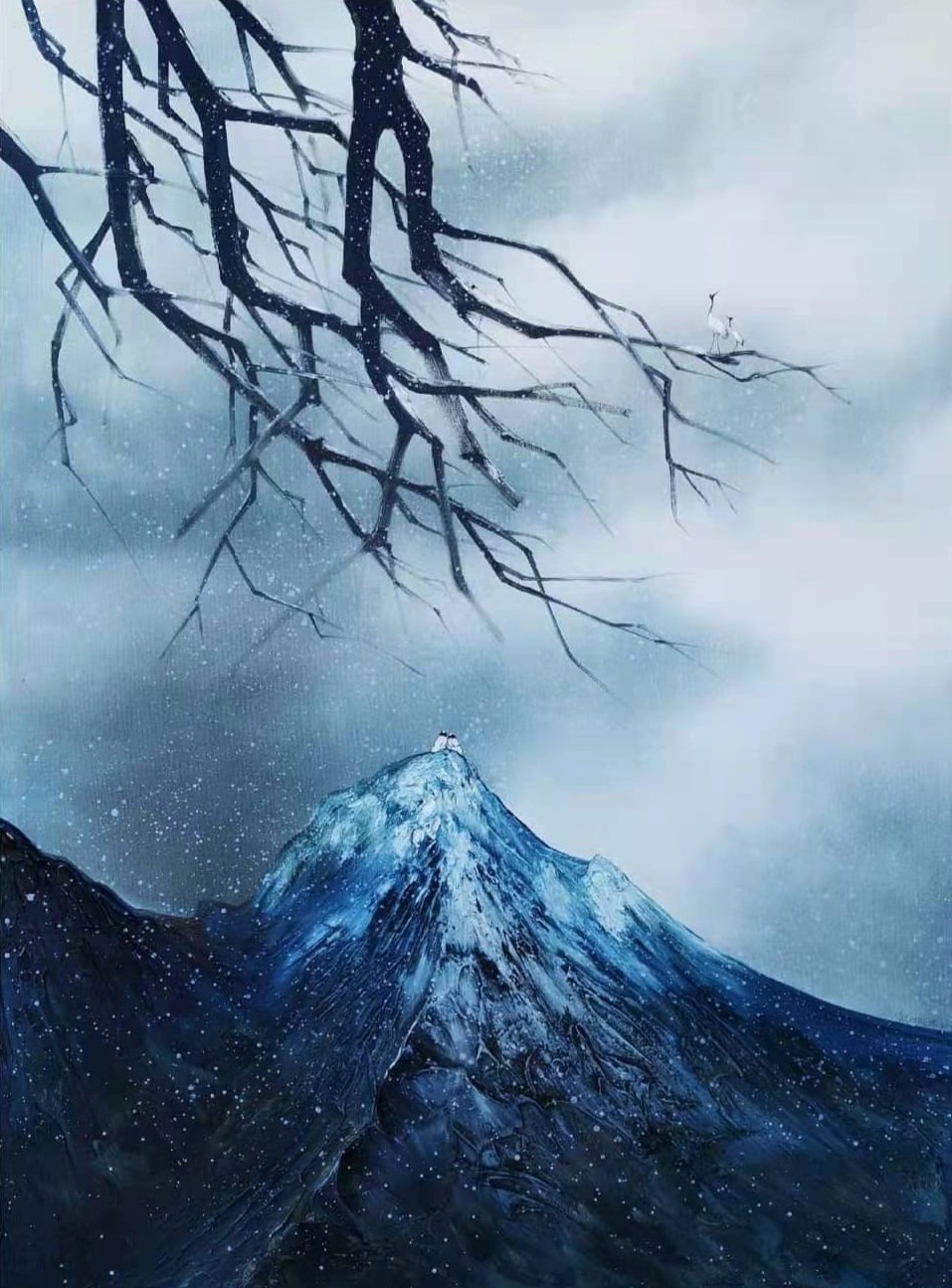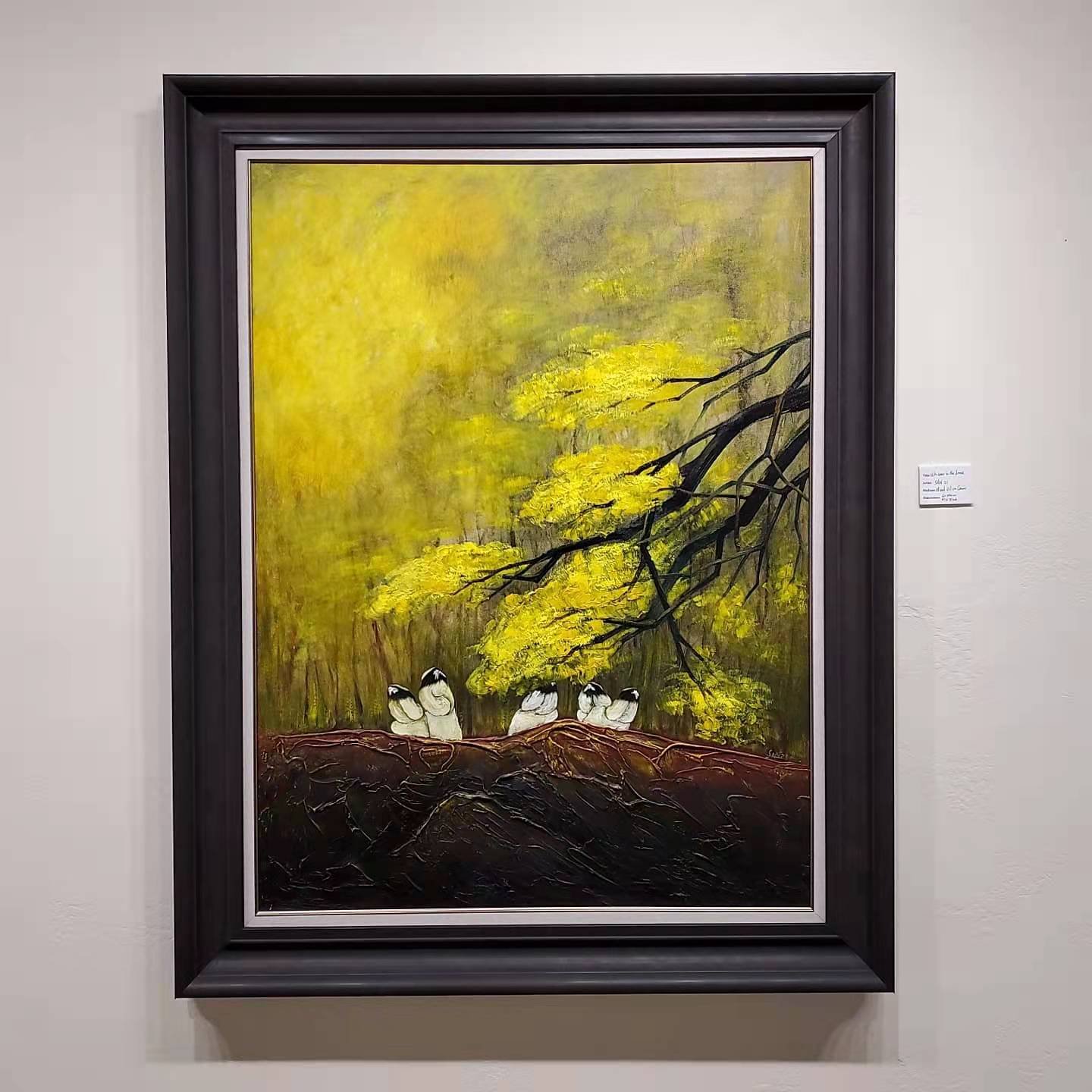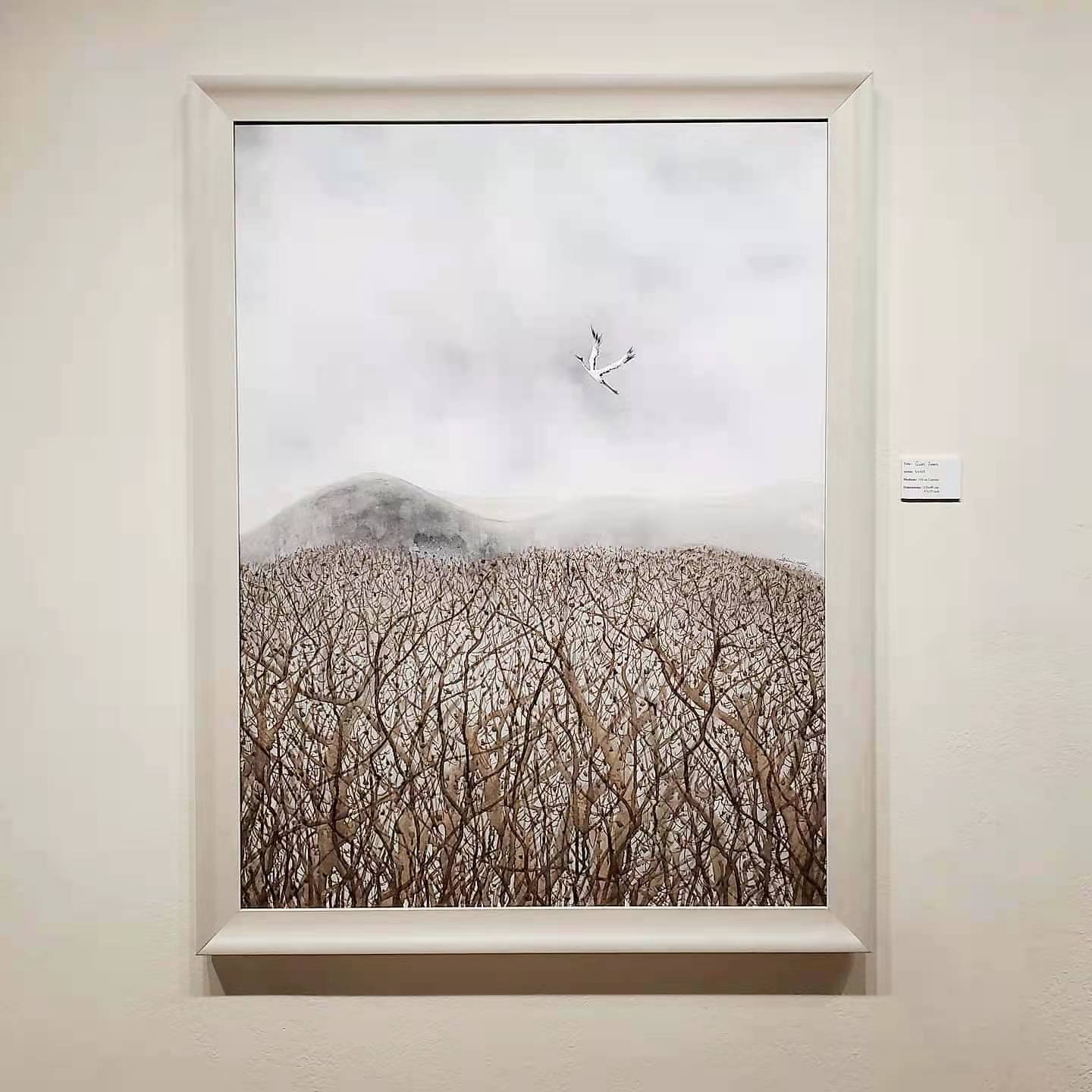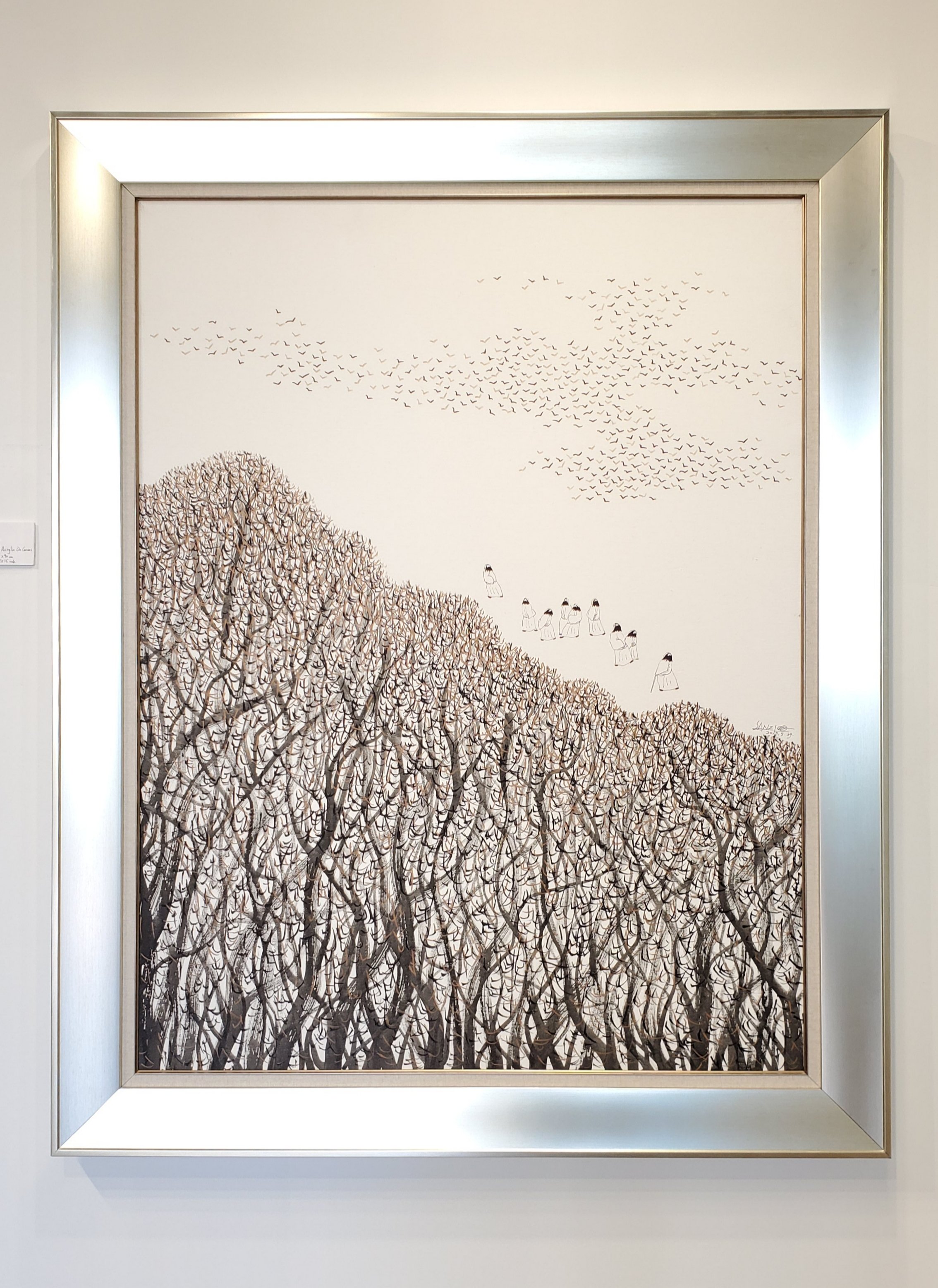Born in Yangzhou, Jiangsu, he is part of China’s earliest generation of academically trained painters. In his early life, Mr. Sanzi worked blue-collared jobs in order to support his artistic career: what was considered “government jobs”, or “iron bowls” (铁饭碗), in China, in the 80s. In the early 2000s, Sanzi was able to achieve a major breakthrough in his career as his work received critical acclaim by collectors in Taiwan and parts of Southeast Asia.
Sanzi is one of the few Chinese artists currently represented by the famous Taglialatella Galleries, and in Art Basel Miami, 2011, his work was displayed on the same stage as artists such as Andy Warhol, Jeff Koons, and Andrew-Wyeth as part of Taglialatella Galleries’ exhibition.
“Little people” is a motif used in many of Sanzi’s works. In his own words, these characters represent all of us seeking the way of life in this world. Through these “little people”, Sanzi tries to tell us, regardless of who and where we are in the world, different people’s actions made up the “Tao”. Sometimes these characters represent ordinary tales of madness, and some represent the passersby simply making up part of the scenery. Everything we do, at any given moment, consists of our past experiences, our ideation of the future, and our reception of the current reality. That is Tao.
The word “Zi” in Chinese carries the meaning of mentor. It means a master of thoughts, and someone who devotes his life to teaching others. It is also pronounced the same as the end syllable in names such as “Confucius" or “Lao Tze”. As for the word “San”, it presents a kind of mentality in the world of Taoism. A free-flowing state of wandering, and being amongst the environment as one. Combined together, Mr. Sanzi tries to use his artistic persona to teach us his ways, it’s the way of Tao, but it’s also the way of life.
Sanzi
散⼦:1965年⽣,油画本科学历,祖籍江苏扬州。曾游历于⾹港、纽约、巴黎、北京等 地,现居上海;散⼦先后于⾹港、上海、迈阿密、纽约、台北、新加坡、吉隆坡等地举办 个展,当地媒体皆有专题报道,尤其是散⼦提出的“四⼗岁之前是儒、四⼗岁之后是道”的 ⾔论已深⼊⼈⼼并⼴为论道;散⼦深厚的⼈⽣阅历和感悟最终选择其以“⽼庄哲学”为创作 主题,其作品独特的表现技巧和画⾯仙风道⾻般的唯美!从⽽拥有不少知⼰藏家;伦敦 “宝龙”、北京“保利”等著名拍卖公司拍卖其作品皆以超百万元⼈民币成交;维基百科、百 度百科、⾕歌等等均有散⼦名典。并且散⼦是美国太格⾥齐-达姆画廊(Taglialatella Galleries)⽬前代理的唯⼀⼀位中国艺术家。蜚声国际的波普艺术家安迪-沃霍尔(Andy Warhol)、杰夫-昆斯(Jeff Koons)、怀伤艺术家安德鲁-怀斯(Andrew-Wyeth)都是出⾃该画廊 (毕加索初来纽约时也是与该画廊合作);在2011年12⽉举办的迈阿密巴塞尔艺博会上, 散⼦作品与安迪沃霍尔、昆斯、怀斯等作品同台展出,在当地获得了强烈反响,散⼦⽤绘 画的形式推进中国道家⽂化在国际上的认知树⽴了先河
初见散⼦的作品,会被它宏伟壮阔的⾃然景观所吸引,也会对画⾯中所出现的“⼩⼈物”产⽣好奇,他们是男是⼥都不重要,重要的是⼩⼈物的⽼少和神态,之所以有⽼少,当然是道的规律所⾄,⾃然界的万事、万物、万象,都同时存在着 阴阳两个⽅⾯。它们虽对⽴又互相统⼀,变化之中⽽⽣成万物。然⽽细细品味散⼦的画, 每次的收获又有新的不同。散⼦把这些“道”全部都表现在了他的画布上。他融合西⽅的雕 塑与中国的⽔墨画,每⼀幅都以⾏云流⽔的技法来承载着“道法⾃然”。
'Gone with the wind'《随风而去》 Oil on canvas 47 x 35 in/120 x 90 cm
*SOLD
'The story of sunflower'《太阳花的故事》 Mixed media on canvas 71 x 63 in /180 x 160 cm
'Miss in Fall'《秋思》 Mixed acrylic on canvas 79 x 39 in /200 x 100 cm
'Walking In Autumn'《秋行》 Oil on canvas 71 x 63 in /180 x 160 cm
'Miss you'《思念的日子》 Mixed media on canvas 35 x 47 in /90 x 120 cm
'Autumn'《秋水伊人》 Mixed media on canvas 71 x 63 in /180 x 160 cm
'Contemplate the clouds'《观云》 Mixed media on canvas 30 x 24 in /76 x 60 cm
'Mighty'《天极》 Oil on canvas 71 x 63 in /180 x 160 cm
'Cranes dance, symbol of good luck'《鹤舞天祥》 Mixed media on canvas 63 x 51 in /160 x 130 cm *SOLD
'Harvest in fall'《秋实》 Mixed media on canvas 47 x 35 in /120 x 90 cm
'Cranes are confidants'《有鹤相知》 Oil on canvas 47 x 35 in /120 x 90 cm
'Whisper in the fall forest'《秋林私语》 Mixed on on canvas 47 x 35 in /120 x 90 cm
'Quiet Forest'《静静的森林》 Oil on canvas 47 x 35 in /120 x 90 cm
'Snowing Sakura'《樱纷》 Oil on canvas 47 x 39 in /120 x 100 cm
'Contemplation'《静观》 Oil on canvas 47 x 35 in /120 x 90 cm
'Noon'《响午》 Mixed acrylic on canvas 47 x 35 in /120 x 90 cm


